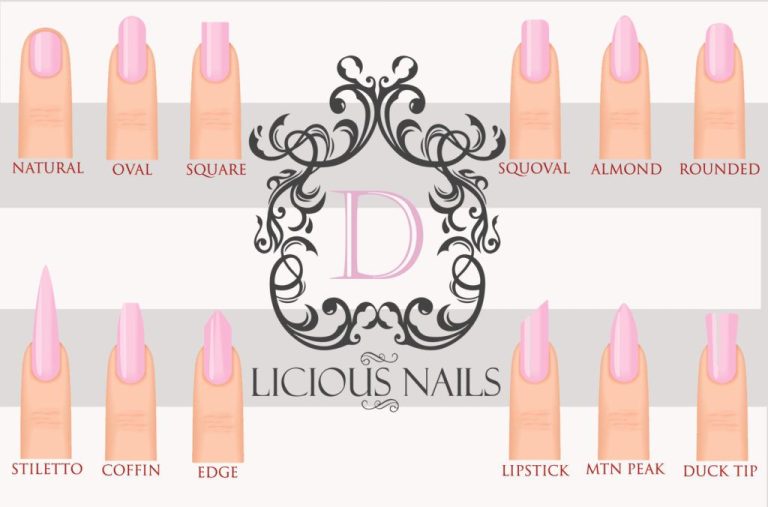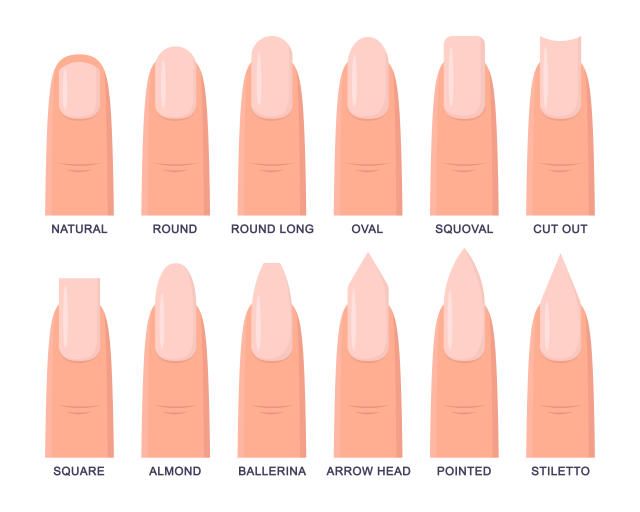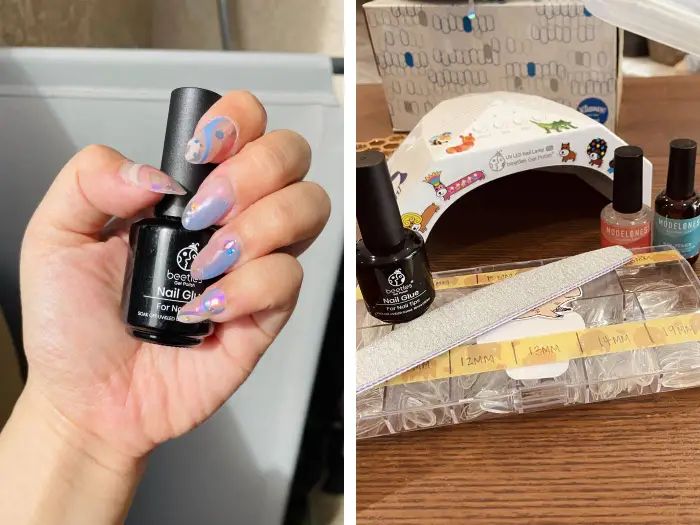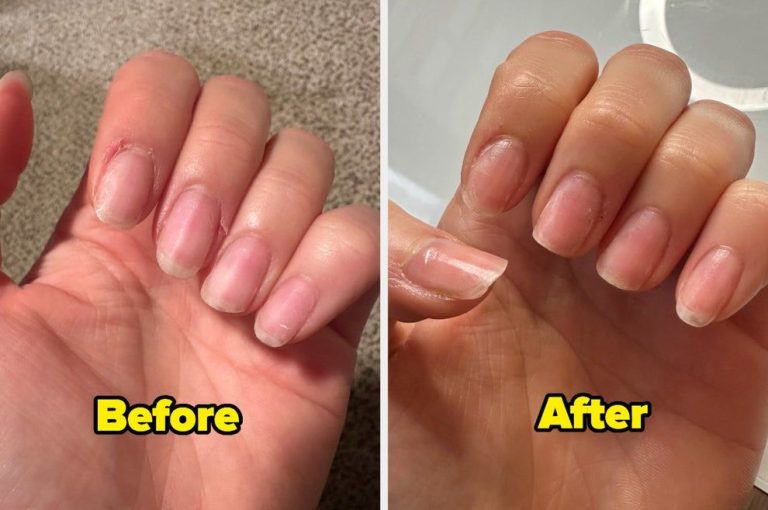Sos! Help For Dry, Brittle Nails: Restoring Moisture & Strength
Dry, brittle nails are a common issue that can affect people of all ages. Brittle nails are nails that are weak, dry, and prone to cracking, splitting, or peeling. Some of the most common causes of brittle nails include frequent exposure to water, use of harsh chemicals, aging, nutritional deficiencies, and certain medical conditions. Having brittle nails can be frustrating and embarrassing. Peeling, cracked nails are also more prone to splitting and getting caught on things.
The good news is that in most cases, brittle nails can be strengthened and restored to a healthy condition. This requires determining the underlying cause and then taking steps like moisturizing nails daily, avoiding harsh chemicals, taking supplements if deficiency is an issue, and modifying behaviors that lead to excessive drying. With some care and consistency, brittle nails can be transformed into strong, healthy nails.
This article will provide an overview of the causes, prevention methods, and treatment strategies to help restore moisture and strength to dry, damaged nails. It will offer both immediate solutions as well as long term nail care advice.
Signs You Have Brittle Nails
Brittle nails are easy to identify because they are thin, weak, and break, split or peel more easily than healthy nails. The main signs and symptoms of brittle nails include:
- Peeling – Layers of the nail may peel away or split from the nail bed.
- Cracking – Fissures or crack lines appear on the nail surface.
- Breaking easily – Brittle nails tend to break with only minor pressure or trauma such as getting caught on fabric.
- Soft – Brittle nails lack hardness and density, and may dent when pressure is applied.
- Dry and rough texture – Brittle nails lose their smoothness and may feel rough.
- Splitting – Brittle nails are prone to splitting vertically through layers of the nail.
- Flaking or crumbling – Bits of nail may flake or crumble off at the tips or along the edges.
- Ridges or grooves – Horizontal ridges may develop on the nail surface.
- Weakened grip – Brittle nails are less able to grip onto objects.
If you notice one or more of these symptoms, it likely indicates that you have brittle nails which require treatment and nourishment. Pay attention to any nails that seem much more brittle in comparison to others.
Causes of Brittle Nails
There are several potential causes of brittle nails:
Lack of moisture – Frequent exposure to water without moisturizing can cause nails to dry out and become brittle. Household chores like dish washing and laundry without gloves can contribute to this.
Aging – As we get older, our nails often become more brittle and rigid. The nails lose moisture and elasticity over time.
Malnutrition – Vitamin, mineral, and nutrient deficiencies can lead to brittle nails. Particularly, deficiencies in iron, vitamin B12, biotin, zinc, and folic acid have been associated with brittle nails.
Health conditions – Medical conditions like thyroid disorders, psoriasis, diabetes, eczema, and anemia can cause brittle nails as a side effect.[1]
Raynaud’s syndrome – This condition impacts circulation and blood flow to the fingers and toes, depriving the nails of needed nutrients and moisture.[2]
Damaging detergents – Harsh soaps, cleaning products, and chemicals found in nail polish remover can dry out and weaken nails over time.
Preventing Brittle Nails
There are several ways you can help prevent your nails from becoming brittle and dry:
Moisturize your nails and cuticles frequently. Apply lotion or cuticle oil several times per day, especially after washing your hands. This helps lock in moisture and prevent brittleness (How to prevent & treat brittle nails).
Take vitamins and supplements. Biotin, vitamin E, calcium, and omega-3s can help strengthen nails and prevent them from becoming brittle (My Secret for Strengthening Brittle Nails).
Follow a healthy diet. Eat foods rich in silica, calcium, zinc, iron, biotin, and vitamins A, C, D, and E. Nuts, seeds, eggs, citrus fruits, fish, and leafy greens may help reduce brittleness.
Wear gloves when washing dishes or cleaning. Dish soaps and cleaning products can dry out nails. Protect your hands by wearing gloves during wet work (How to prevent brittle nails | Journal).
Restoring Moisture
One of the best ways to restore moisture to dry, brittle nails is to apply natural oils. Look for oils like olive, coconut, and avocado which are rich in vitamins and fatty acids that nourish the nails. Gently massage a few drops of oil into each nail and cuticle daily. The oils will moisturize the nail plates while the massage stimulates circulation. For an intensive treatment, apply oil generously and let it soak in for at least 10 minutes before rinsing.

Hydrating nail creams and butters can also replenish lost moisture. Shea and cocoa butters are excellent options, as they are thick emollients that create a protective barrier to seal in moisture. Additionally, urea-based creams attract and bind water to soften nails. For best results, apply a thick layer of cream or butter onto nails and cuticles before bed and wear cotton gloves overnight while the product soaks in.
Salon hydrating treatments like paraffin wax or collagen gloves can also rejuvenate brittle nails. The warmth from the wax or gloves opens up the nail cuticles to allow the intensive hydrators to penetrate more deeply. These treatments provide longer-lasting nail hydration that can restore strength and flexibility. For continued improvement, get professional hydrating treatments every 2-4 weeks until nails show signs of recovery.
Strengthening Brittle Nails
There are several ways to help strengthen brittle nails from the inside out. Getting enough of certain vitamins and minerals is important for nail health.
Biotin is a B vitamin that plays a key role in producing keratin, a protein that makes up your hair and nails. There is some evidence that biotin supplements may help strengthen brittle nails.
Calcium is also important for nail health, as low calcium intake has been linked to dry, brittle nails. Getting enough calcium from your diet or supplements may help strengthen nails.
Using a nail hardener or strengthener containing ingredients like biotin, collagen, and calcium can also help by forming bonds over your nails to reinforce them. Apply a nail hardener to clean, dry nails daily.
It may take several months of getting adequate nutrients and using a nail strengthening product to see improvements in nail strength. Patience and persistence are key.
Protecting Brittle Nails
One of the most important things you can do to help brittle nails is avoid further damage. Be gentle with your hands and avoid using your nails as tools. Limit exposure to chemical cleaners, avoid very hot water when washing dishes or showering, and wear gloves when doing chores like cleaning or gardening.
Using a strengthening nail polish or nail wraps can also help protect fragile nails. An added layer of polish or wrap helps shield nails from breaks and snags. Look for polishes and wraps formulated to strengthen nails, often containing fortifying ingredients like calcium, vitamins, and proteins. When shopping for nail polish, avoid acetone-based polishes which can be very drying. Stick to gentle nail polish removers as well.
According to this TikTok tutorial, you can protect brittle nails while gardening by wearing disposable gloves to keep dirt and debris from getting underneath the nails. You can also apply a layer of strengthening nail polish or nail wrap before gardening for added protection.
When to See a Doctor
In most cases, brittle nails can be managed at home with over-the-counter treatments and lifestyle changes. However, you may need to see a doctor if your nail brittleness is very severe, related to an underlying condition, or does not improve with home care.
Some signs it’s time to make an appointment include:
- Your nails are cracking, splitting, or peeling excessively no matter what you try at home
- You have grooves, pitting, or other changes in the nail surface or shape
- Your nails are separating from the nail bed
- Brittleness is only in one nail or hand
- You have additional symptoms like pain, swelling, or redness around the nail
- An injury to the nail seems to have caused the brittleness
A doctor can help diagnose the underlying cause and rule out conditions like infections, autoimmune disorders, thyroid disease, and nutritional deficiencies. Blood tests, a nail biopsy, or other testing may be recommended.
Treatment will depend on the cause but may include prescription medications, supplements, laser therapy, or in severe cases, oral or topical medications. Managing any underlying illness is also important.
See your doctor promptly if you have any concerns about new nail brittleness that does not have an obvious explanation and does not respond to home remedies within 2-4 weeks. Getting proper treatment can help restore your nails and avoid complications.
Sources:
https://health.clevelandclinic.org/brittle-nails-causes-treatment
https://www.goodrx.com/health-topic/dermatology/see-a-doctor-about-nail-changes
Caring for Brittle Nails Long-Term
To keep brittle nails healthy in the long run, it’s important to establish an ongoing nail care routine focused on moisture and protection. Here are some tips for long-term brittle nail care:
Moisturize nails daily. Apply a thick, emollient hand and nail cream or oil like shea butter after washing hands or showering and before bedtime. Products with lanolin, glycerin, or petroleum jelly help seal in moisture (Cleveland Clinic, 2022).
Use gloves for wet work. When doing dishes, cleaning, or other chores involving water, wear cotton-lined rubber gloves to minimize exposure and keep nails protected (WebMD, 2022).
Avoid harsh nail products. Refrain from using acrylic nails, gel polish, or other synthetic nail enhancements that can damage the nail bed. Stick to regular polish and non-acetone remover (Mayo Clinic, 2022).
Get regular trims and file properly. See a manicurist every 2-3 weeks for gentle filing and trimming to prevent cracking and peeling. File nails gently in one direction avoiding aggressive back-and-forth motions.
Take supplements. Ask your doctor about adding a daily biotin supplement, which studies show can strengthen weak and brittle nails over time (Mayo Clinic, 2022).
With diligent daily care and moisture, most cases of brittle nails can be strengthened and restored to health over time.
Conclusion
In summary, brittle nails are a common issue caused by factors like aging, genetics, nutritional deficiencies, and damage from overexposure to water. While brittle nails can be frustrating to deal with, the good news is there are many ways you can restore moisture, strength, and health to your nails.
Making small tweaks to your lifestyle and nail care routine can go a long way towards preventing and treating brittle peeling nails. Be diligent about moisturizing your nails and cuticles daily, protect your hands from excess water exposure, wear gloves for wet tasks, avoid harsh chemicals in nail products, take supplements if deficient, and consider strengthening treatments like biotin, collagen, or acrylic/gel overlays. It’s also important to identify and address any underlying causes with your doctor.
With some patience and TLC, you can get your brittle nails back to a healthy condition. Don’t lose hope if you don’t see improvements right away. Restoring moisture and strength takes time. But with a little effort every day, you’ll be flaunting strong, beautiful nails once again.





